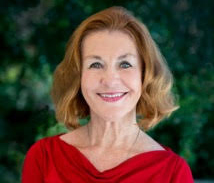 Judith Pinkerton Josephson loves to dig into the past. She believes that behind every person, every relationship, any major event, there lies a story or several stories. Her award-winning biographies, history books, and picture books include fiction and nonfiction for children. She has also co-written funny grammar books for adults. In this column, she blogs about the reissue as an e-book of her previously published print book about the children in America who grew up during World War II.
Judith Pinkerton Josephson loves to dig into the past. She believes that behind every person, every relationship, any major event, there lies a story or several stories. Her award-winning biographies, history books, and picture books include fiction and nonfiction for children. She has also co-written funny grammar books for adults. In this column, she blogs about the reissue as an e-book of her previously published print book about the children in America who grew up during World War II.
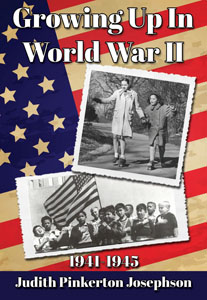 War affects children, no matter where or when in the world it’s waged or what countries are involved. Sometimes it leads young people to serve and do extraordinary things, as it did our late president George H.W. Bush, who served in WWII. Young people, faced with the possible loss of those they loved, did their best to help out at home. They collected scrap metal, saved money to buy war bonds, planted Victory Gardens, and learned to do without things like sugar, butter, new shoes, and bicycles. Teenagers lied about their age and joined the military. Children saw their mothers enter the work force, doing jobs usually held by men. “We Can Do It” urged Rosie the Riveter. Posters and slogans urged people to unite behind the effort. For my newly revised and reissued book Growing up in World War II (eFrog Press), I talked with people who were children then. Not surprisingly, their memories spilled out, vivid and lasting. I collected stories of what life was like for them.
War affects children, no matter where or when in the world it’s waged or what countries are involved. Sometimes it leads young people to serve and do extraordinary things, as it did our late president George H.W. Bush, who served in WWII. Young people, faced with the possible loss of those they loved, did their best to help out at home. They collected scrap metal, saved money to buy war bonds, planted Victory Gardens, and learned to do without things like sugar, butter, new shoes, and bicycles. Teenagers lied about their age and joined the military. Children saw their mothers enter the work force, doing jobs usually held by men. “We Can Do It” urged Rosie the Riveter. Posters and slogans urged people to unite behind the effort. For my newly revised and reissued book Growing up in World War II (eFrog Press), I talked with people who were children then. Not surprisingly, their memories spilled out, vivid and lasting. I collected stories of what life was like for them.
On the morning of December 7, 1941, Verna Morimatsu, age seven, had been playing outside her home when she noticed strange planes flying toward Pearl Harbor. When she entered her home, she heard a huge crash and found a gaping hole left by an unexploded bomb that had fallen through the roof and dining room floor, leaving splinters strewn about, and the furniture in pieces. An attack on Pearl Harbor had begun. Mara Hart remembers how scary it was at night when both her parents ventured out into a darkened New York City as air raid wardens, making sure no lights alerted approaching enemies about potential bombing targets. Margie Bolger Greek recounted how English parents sent their daughter Vina to Ohio; she became part of Margie’s family for the duration of the war. Paul Shook lived near a military base. He and other second graders stood and waved to military convoys passing by their La Cañada, California school. The soldiers threw bubble gum to the kids—a rare treat with rationing in place. Robert Raymond remembers losing his beloved older brother to the war. Leroy Anderson remembered his family gathering around the radio each night to listen to the war report. It was a solemn time—no talking allowed.
During the World War II years, Americans heeded the rallying cry, “Uncle Sam Wants You.” And yet there was also a darker side to the war effort. German Americans were suspect. The government forced Japanese American children and their families to leave their homes and businesses and enter internment camps that felt like prisons. People’s ongoing racist attitudes erected barriers for African American young people like Martin Luther King, Jr.
Discover what life was like for American children during World War II through true stories of young people who lived through this time. Children who lived through World War II never forgot. As adults, they found that the war changed their lives forever.
Written for middle grade readers and up, Growing Up in WWII makes this now “long ago” war real to young people and challenges them to think about patriotism, sacrifice, and the impact of history. The many photographs of children and primary source documents like letters, maps, posters, images of poppies, songs, and even recipes help bring the period of 1941 to 1945 to life.
Check out the ebook on Amazon Kindle at Growing Up in World War II (for readers middle grade and up, plus older readers)
Amazon has named it #1 New Release in Teen & Young Adult Military History eBooks
Visit me at www.judithjosephson.com, and follow me on Facebook, Twitter, Instagram, YouTube, and Pinterest.
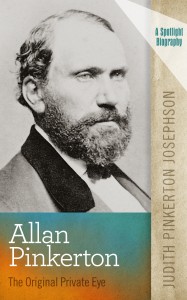
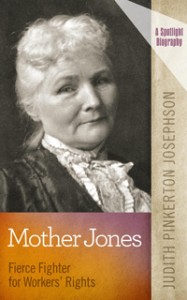 Happy Mother’s Day to all the mothers out there, as well as those who mother and mentor young people—aunts, grandmothers, friends, teachers, youth leaders, coaches! One Mother’s Day, my daughter gave me a paperback book, Important Women of the Twentieth Century. It held a section on Mother Jones, a.k.a. Mary Harris Jones, which inspired me to write one of my most intriguing biographies for young people. For the next several months, Mother Jones figuratively stomped around my office in her long black dress, hat, and boots, looking over my shoulder to make sure I captured her spirit and tenacity.
Happy Mother’s Day to all the mothers out there, as well as those who mother and mentor young people—aunts, grandmothers, friends, teachers, youth leaders, coaches! One Mother’s Day, my daughter gave me a paperback book, Important Women of the Twentieth Century. It held a section on Mother Jones, a.k.a. Mary Harris Jones, which inspired me to write one of my most intriguing biographies for young people. For the next several months, Mother Jones figuratively stomped around my office in her long black dress, hat, and boots, looking over my shoulder to make sure I captured her spirit and tenacity.
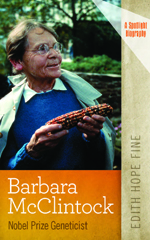
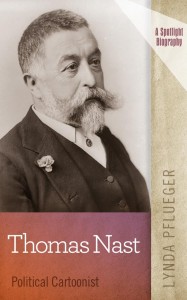
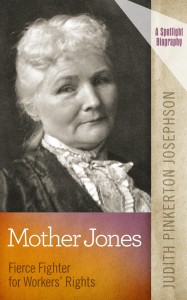
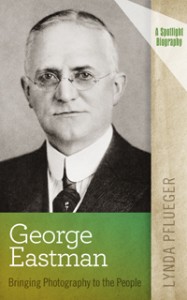
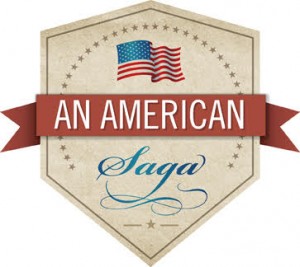
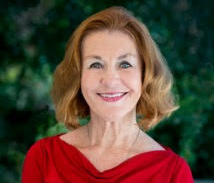 Judith Pinkerton Josephson has taught at various grade levels, and has written books for children—biographies, picture books, and childhood history books—and co-written two zany grammar guides for adults. She believes that behind every person and every relationship, there lies a story. Capturing the essence of that story in the space and time it took place makes writing fascinating. Visit her
Judith Pinkerton Josephson has taught at various grade levels, and has written books for children—biographies, picture books, and childhood history books—and co-written two zany grammar guides for adults. She believes that behind every person and every relationship, there lies a story. Capturing the essence of that story in the space and time it took place makes writing fascinating. Visit her 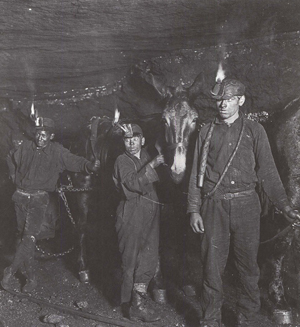
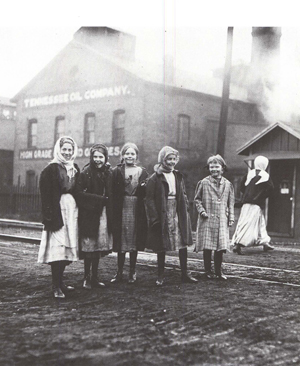

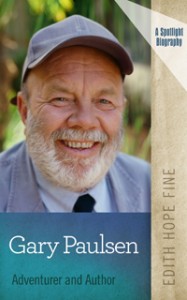
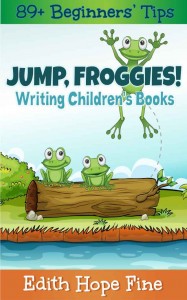
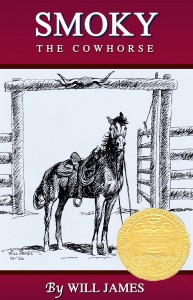 This children’s classic, and winner of the 1927 Newbery Medal for children’s literature, is the unforgettable story of a horse—from his first hours on the prairie sod to his final years out to pasture. Smoky grows up wild, strong, and wise to the ways of the range, fighting wolves and braving stiff winds. Clint, a bronco-busting cowboy on the Rocking R Ranch, thinks the spirited animal is the finest little horse he ever saw. After many adventurous years with Clint on the Rocking R, Smoky mysteriously disappears, only to turn up later as an outlaw bucking horse on the rodeo circuit.
This children’s classic, and winner of the 1927 Newbery Medal for children’s literature, is the unforgettable story of a horse—from his first hours on the prairie sod to his final years out to pasture. Smoky grows up wild, strong, and wise to the ways of the range, fighting wolves and braving stiff winds. Clint, a bronco-busting cowboy on the Rocking R Ranch, thinks the spirited animal is the finest little horse he ever saw. After many adventurous years with Clint on the Rocking R, Smoky mysteriously disappears, only to turn up later as an outlaw bucking horse on the rodeo circuit.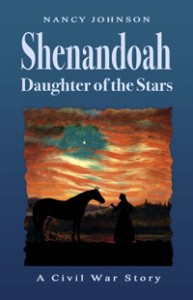 During the turbulent years of the Civil War, three young people struggle to follow their dreams as the war devastates their homeland and their way of life in the Shenandoah Valley of Virginia in this final installment of Johnson’s Civil War trilogy.
During the turbulent years of the Civil War, three young people struggle to follow their dreams as the war devastates their homeland and their way of life in the Shenandoah Valley of Virginia in this final installment of Johnson’s Civil War trilogy.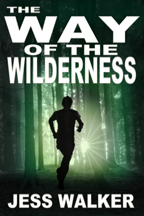 Sam West thought he knew what it was like to feel alone in the world. He has been abandoned by his mother, neglected by his alcoholic father, and ignored by every foster parent he was sent to. At fifteen, Sam decides to find his mother in search of a future with the woman he barely remembers. But when his bush plane crashes in Northern Ontario, Canada, a vast expanse of untamed wilderness, Sam is the sole survivor and utterly alone.
Sam West thought he knew what it was like to feel alone in the world. He has been abandoned by his mother, neglected by his alcoholic father, and ignored by every foster parent he was sent to. At fifteen, Sam decides to find his mother in search of a future with the woman he barely remembers. But when his bush plane crashes in Northern Ontario, Canada, a vast expanse of untamed wilderness, Sam is the sole survivor and utterly alone.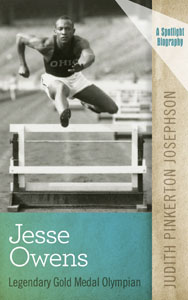 “I always loved running,” said track-and-field legend Jesse Owens, who as a boy could outrun all his playmates. That blazing speed helped Owens set track records in junior high, high school, and on into college at Ohio State University. At one Big Ten meet, he smashed three world records and tied a fourth in 45 minutes. By the time Owens competed in the 1936 Summer Olympics in Berlin, Germany, people used words like “express” and “comet” to describe him. Germany’s leader, Adolf Hitler, and his Nazi party believed that Jews, African-Americans, and other groups were inferior beings. Jesse Owens proved them wrong by winning four gold medals.
“I always loved running,” said track-and-field legend Jesse Owens, who as a boy could outrun all his playmates. That blazing speed helped Owens set track records in junior high, high school, and on into college at Ohio State University. At one Big Ten meet, he smashed three world records and tied a fourth in 45 minutes. By the time Owens competed in the 1936 Summer Olympics in Berlin, Germany, people used words like “express” and “comet” to describe him. Germany’s leader, Adolf Hitler, and his Nazi party believed that Jews, African-Americans, and other groups were inferior beings. Jesse Owens proved them wrong by winning four gold medals.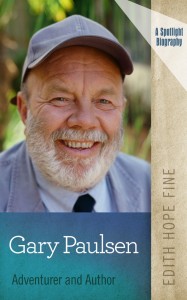 With more than two hundred books to his credit, Gary Paulsen is fast becoming an American legend. A popular children’s author, Paulsen draws on life experiences to write mystery, memoir, adventure, humor, and survival, including the best-selling Hatchet. He has run the Iditarod, survived violent sea storms, picked crops, worked at carnivals, been blown off a mountain, plunged through lake ice in the dead of winter, and had his pants catch fire while training his dogs. The result is books people love to read.
With more than two hundred books to his credit, Gary Paulsen is fast becoming an American legend. A popular children’s author, Paulsen draws on life experiences to write mystery, memoir, adventure, humor, and survival, including the best-selling Hatchet. He has run the Iditarod, survived violent sea storms, picked crops, worked at carnivals, been blown off a mountain, plunged through lake ice in the dead of winter, and had his pants catch fire while training his dogs. The result is books people love to read.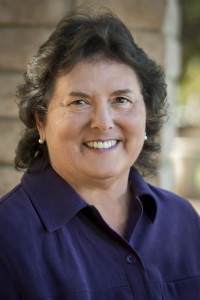 Lynda Pflueger has written nine biographies for children. Her books have been favorably reviewed by Kirkus, School and Library Journal, and Booklist.
Lynda Pflueger has written nine biographies for children. Her books have been favorably reviewed by Kirkus, School and Library Journal, and Booklist. 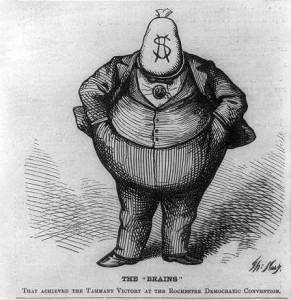 I was intrigued by Nast’s story. After the Civil War, with only his pen as a weapon, he helped bring down a notoriously corrupt group of politicians called the Tweed Ring in New York City. Nast continually harassed the ring with his drawings and often focused his attention on William M. Tweed, the leader of the ring. In one drawing entitled “Brains” Nast drew Tweed dressed in a three-piece business suit and replaced his head with a money bag to signify the money he had stolen from the city.
I was intrigued by Nast’s story. After the Civil War, with only his pen as a weapon, he helped bring down a notoriously corrupt group of politicians called the Tweed Ring in New York City. Nast continually harassed the ring with his drawings and often focused his attention on William M. Tweed, the leader of the ring. In one drawing entitled “Brains” Nast drew Tweed dressed in a three-piece business suit and replaced his head with a money bag to signify the money he had stolen from the city.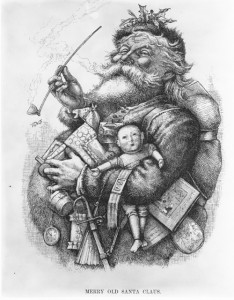 I also fell in love with Nast’s drawings of Santa Claus inspired by Clement Moore’s poem, “A Visit from St. Nicholas.” Nast portrayed Santa Claus as a jolly old fellow with a white beard and round belly.
I also fell in love with Nast’s drawings of Santa Claus inspired by Clement Moore’s poem, “A Visit from St. Nicholas.” Nast portrayed Santa Claus as a jolly old fellow with a white beard and round belly.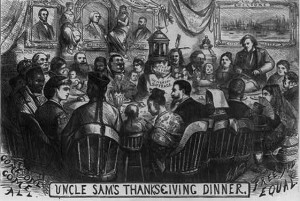
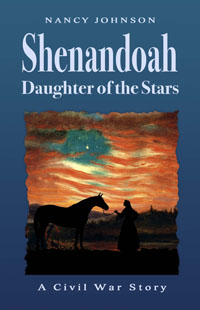 They especially need to know that young people also gave their lives in the struggle, as shown in her third book, Shenandoah: Daughter of the Stars (ebook $3.99; paperback $9.95). The Battle of New Market, which took place on May 15, 1864, in Virginia’s Shenandoah Valley, was notable for the participation of nearly 250 military cadets—the youngest only age 15.
They especially need to know that young people also gave their lives in the struggle, as shown in her third book, Shenandoah: Daughter of the Stars (ebook $3.99; paperback $9.95). The Battle of New Market, which took place on May 15, 1864, in Virginia’s Shenandoah Valley, was notable for the participation of nearly 250 military cadets—the youngest only age 15.